DUMBO Phase-III
Started in late 2009, project DUMBO phase 3 focuses on Disruption Tolerant Networking (DTN) and Social Networking (SN) services in OLSR MANET/VANET. Disruptions are very common and inevitable in MANET/VANET emergency networks. Radio propagation range, mobility, terrain are among some factors that cause network disruptions. The result is that a path between a source node and a destination node may not always be available. Most DTN routing algorithms employ variations of store-and-forward techniques to deliver each individual information unit called a DTN bundle from its source to one or more destinations. The bundle can be a short text message or a file of any type.One key enabling technology is the Structured Mesh Overlay Network (SMON), researched and developed by our former Ph.D. student. SMON provides overlay construction capabilities – allowing a subset of nodes in the physical network to discover each other and to communicate as peers. The topology of an overlay network can be significantly different from that of the underlying network. Overlay networks can be used for service and resource discoveries.
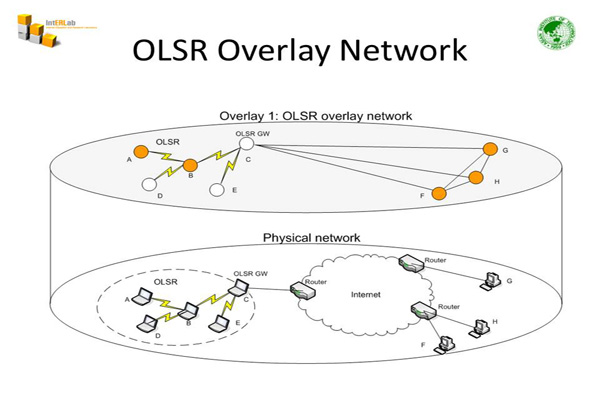
In March 2010, we had an opportunity to field test DUMBO mobile routers in the Khao-Yai (~Grand Mountain) national park. Khao-Yai provides a unique and highly challenged environment for emergency networking tests because it has sporadic GSM coverage and very dense forest in some parts. We learned how our MANET communications can be easily disrupted by terrain, trees and others.
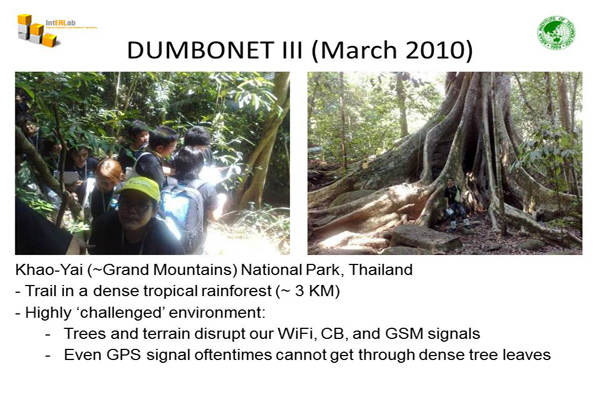
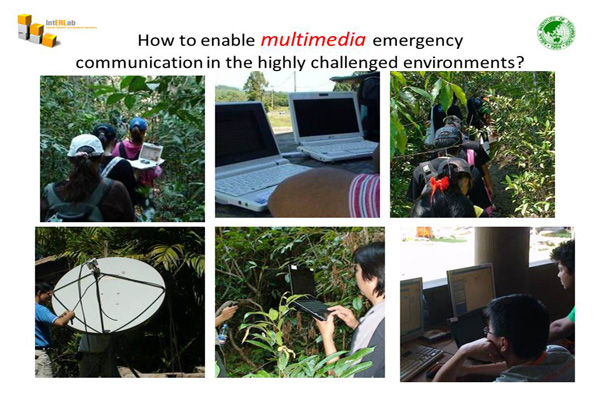
Around the same time, we have another opportunity to conduct OLSR VANET tests to see how we could design and incorporate the DTN technology into our DUMBO mobile routers.
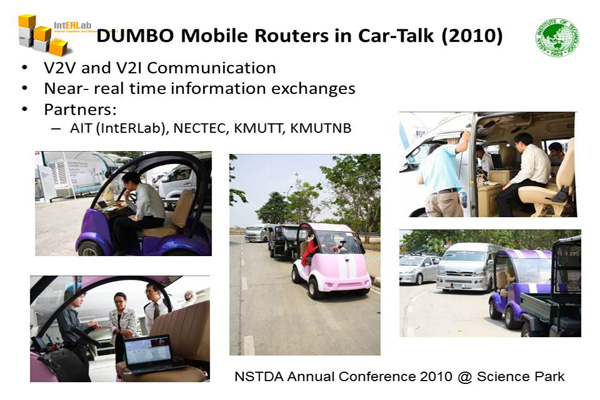
In late 2010, a DTN routing protocol utilizing OLSR overlay, called Delay Tolerant Structured Overlay Link State Routing (DTS-OLSR), was developed. DTS-OLSR utilizes SMON to form DTN overlay in OLSR MANET/VANET. DTS-OLSR provides DTN routing capabilities among OLSR MANET/VANET network partitions. Likewise, a Social Networking (SN) service utilizing SMON was also developed. We field tested both DTS-OLSR and SN in laboratory and in high mobility VANET situations. DTS-OLSR and SN services have become an integral part of our DUMBO mobile router since. 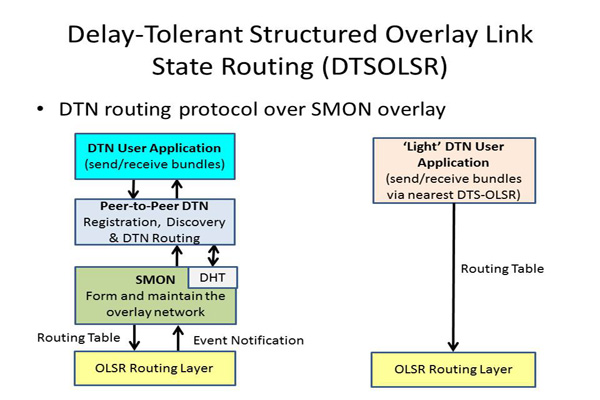
With the DTN delivery capabilities, rescuers may transmit information in the form of short text or bulk file (e.g. map, inventory, situation report) from a source to a destination in the situation where the path between them is disruptive (i.e. not always-on). 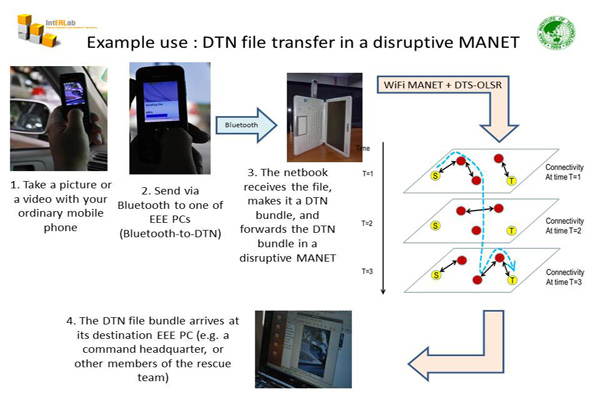
In 2011, we have further simplified how one may configure and deploy our DUMBO mobile routers. We look at the way people use Citizen Band (CB), a.k.a. walkie-talkie, radios. They would just punch in a channel number and talk. We have mimicked that by creating command scripts which allow the routers to be easily configured to startup with necessary services and parameters. Now everyone can operate a DUMBO mobile router by running a script and input a numeric ID (e.g. 10 to identify that this is DUMBO mobile router number 10). The rest configuration work will be taken care of by the scripts. The DUMBO mobile router will be up and running, ready to build an emergency network with other participating DUMBO mobile routers in almost no time.
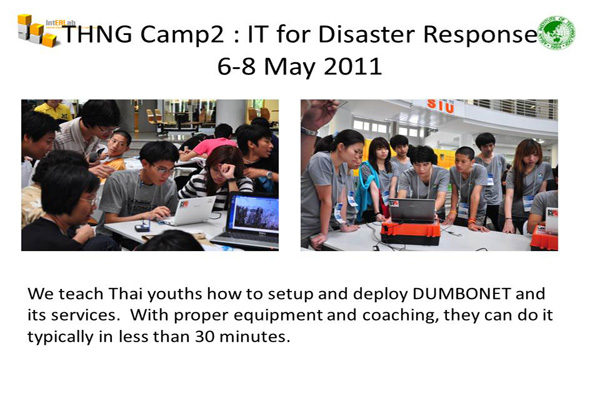
We also accommodate the use of the now emerging smart phones and tablets (e.g. iPhone, iPad, Android phones/tablets). We provide an easy-to-use network access technology to these smart phones and tablets. They can connect to DUMBO mobile routers and start using our DUMBO services (VoIP, DTN, E-mail, Social Networking) with very little effort. No jail-breaking action is required. The use of smartphones and tablets in DUMBO MANET/VANET is always free of charge.
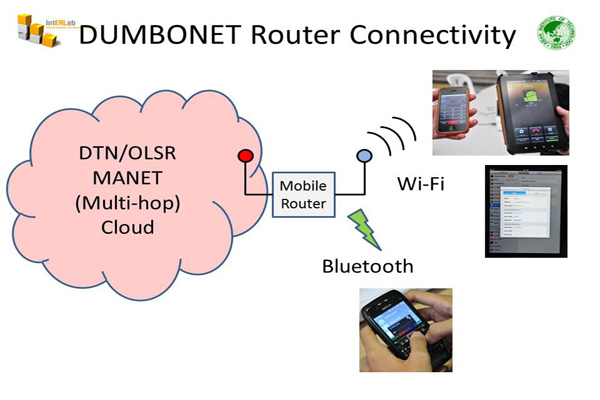
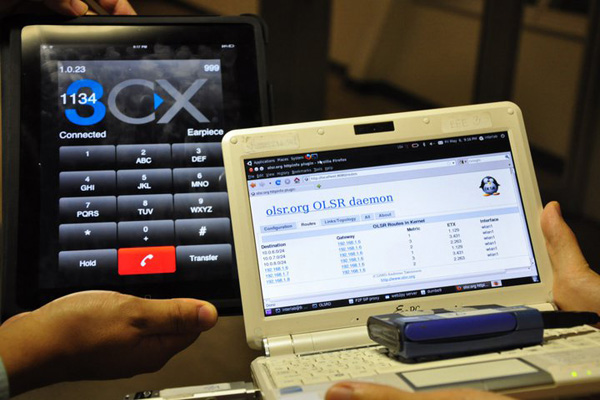
Making a free VoIP call from an Apple iPad (left) via a DUMBO mobile router (right).